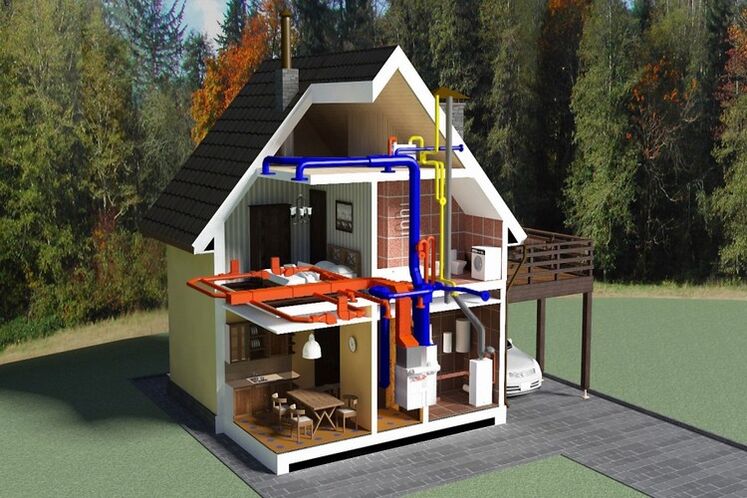Resources and energy-saving technologies require a compulsory comprehensive approach to the production, distribution and consumption of electricity. In the stage of building houses, modern energy-saving technologies are always combined with innovations in the construction field, because a large part of the electricity is used for heating houses in cold weather and cooling in hot weather. This immediately requires the planned use of energy-saving materials. In addition, in some cases, a customized home power supply system will allow the traditional power supply method to be completely abandoned.
Building energy-saving technology
So far, the best example of building energy-saving technology can be used as the so-called "energy-saving house", in which ideally, in winter, the traditional heating system can be maintained at a comfortable temperature, and in summer without the use of traditional heating system. Air Conditioning System.
This structure, depending on technological changes, is also called a zero-energy house-"zero-energy house" or "passive house".
In order to be as close as possible to the standard of such a house, it contains:
- Install a separate boiler room or other heat supply source, usually connected to a pump, to return the waste gas heat, geothermal or waste water heat from the ventilation pipes,
- Instead of part of the solar energy (heat collectors), the direct energy of the solar energy is fully utilized according to the heat balance of the building, connecting translucent and reflective structures,
- They use modern insulation materials, which are suitable for building materials and communication systems.
The above energy-saving methods assume that the building becomes the ultimate recipient of power from the power plant. However, now, the possibility of a complete transition to a separate energy supply system is considered an innovative practice, when the building itself actually becomes a "power plant" and begins to distribute electricity to other consumers.

For example, with the widespread use of nano-photovoltaic cells, this is possible, and nano-photovoltaic cells are known as one of the most promising solutions. In Freiburg, Germany, the local solar energy research institute is using the space of the city as a "testing ground" for solar energy technology testing, introducing solar panels in the stadium and rebuilding the entire block (58 residential buildings and one office building) as a "The new concept of "active house" is the main obstacle to the widespread adoption of these technologies is the high cost of ultra-pure industrial silica gel used for batteries (approximately $450/kg). It was replaced by nanotechnology and a special kind of carbon-fullerene. But so far, its efficiency is 2. 5 times lower than that of silicon solar cells.
Energy-saving technology in daily life
The main direction of creating energy-saving technology in daily life is to use "smart" technology to individually adjust power consumption, which depends on:
- Residents’ personal habits and microclimate preferences,
- The time of the year (one day) for the "smart" system to rebuild itself, choose to turn it on and at what intensity to work.
For example, an automatic home lighting system only turns on the lights when necessary, turns off during the day, and turns on when activated by sound through the built-in microphone at night. When noise occurs within a radius of 5 meters, the energy-saving lamp will automatically light up and will not go out when there are people in the room.
But before these "intelligence" innovations become dominant, experts recommend the use of "preventive power saving" methods in daily life, including:
- Use energy-saving lamps (5-6 times lower power consumption) or even more economical LED lamps instead of incandescent lamps,
- Household appliances transitioning to high energy efficiency class (A-A +++) can show a 50% difference compared with the outdated model.
- Turn off the device (device) in standby mode: TV, music center and recorder, which still consume 3-10 W when turned off but not turned off,
- Turn off or put the computer in sleep mode, during all-weather work, it will consume 70-120 kW/h per month.
Special attention should be paid to the refrigerator. It is recommended:
- Don’t put it next to the stove (increasing energy consumption by 25-30%),
- Do not fill food that has not been cooled,
- Prevent the formation of gaps in the seal,
- Do not cover the radiator, and do not lean the "back" against the wall.
The introduction of energy-saving technology in residential and public services looks like a transition to a drive with a function of optimizing the speed according to the actual load, which can save up to 50% of electricity when operating elevators or ventilators.
























